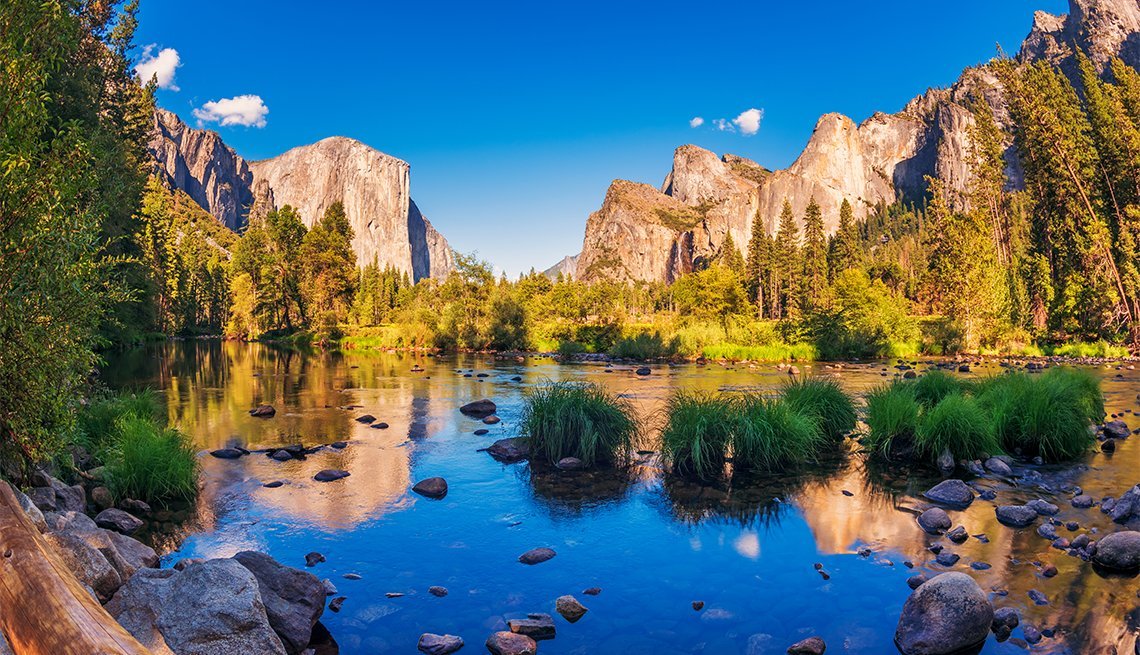Yosemite National Park, nestled in the Sierra Nevada Mountains of California, is a natural wonderland renowned for its towering granite cliffs, majestic waterfalls, ancient giant sequoias, and diverse ecosystems. Spanning over 1,100 square miles, Yosemite attracts millions of visitors each year who come to marvel at its stunning landscapes and immerse themselves in its rich natural and cultural history. Whether you’re a first-time visitor or a seasoned explorer, here’s a comprehensive guide to help you make the most of your journey through Yosemite National Park.
Getting There
Yosemite National Park is located in central California, approximately 200 miles east of San Francisco and 300 miles north of Los Angeles. The park has several entrances, but the most popular and accessible are:
- Big Oak Flat Entrance: Located off Highway 120 from the west, near Groveland.
- Arch Rock Entrance: Also off Highway 140 from the west, near Mariposa.
- South Entrance: Accessible via Highway 41 from the south, near Fish Camp.
- Tioga Pass Entrance: Located off Highway 120 from the east, near Lee Vining (open seasonally, typically from late spring through fall).
Each entrance provides access to different areas of the park, so choose based on your starting point and intended destinations within Yosemite.
Things to See and Do
Yosemite Valley
Yosemite Valley is the heart of the park and home to some of its most iconic landmarks, including:
- El Capitan: A massive granite monolith popular with rock climbers and photographers.
- Half Dome: A distinctive granite dome that attracts hikers seeking a challenging ascent to its summit.
- Yosemite Falls: One of the tallest waterfalls in North America, comprised of Upper Yosemite Fall, Lower Yosemite Fall, and the Middle Cascades.
Visitors can explore the valley floor via hiking trails, bike paths, and scenic viewpoints like Tunnel View and Glacier Point, which offer breathtaking panoramic views of the valley and its famous landmarks.

Mariposa Grove
Mariposa Grove is home to over 500 mature giant sequoias, including the famous Grizzly Giant and California Tunnel Tree. Visitors can explore the grove via a network of trails that wind through towering sequoias and lush forest scenery. The Mariposa Grove Welcome Plaza provides visitor information, exhibits on giant sequoias, and a shuttle stop for accessing the grove.
Glacier Point and Tunnel View
Glacier Point offers arguably the best panoramic views of Yosemite Valley, Half Dome, and Yosemite Falls. It is accessible by car (when the Glacier Point Road is open) or via hiking trails like the Four-Mile Trail. Nearby, Tunnel View provides a classic vista of El Capitan, Bridalveil Fall, and Half Dome framed by the natural tunnel-like formation of the valley.
Tuolumne Meadows
Located in the high country of Yosemite, Tuolumne Meadows is a pristine alpine landscape characterized by vast meadows, crystal-clear streams, and granite domes. Popular activities include hiking (such as the John Muir Trail and Pacific Crest Trail), rock climbing, fishing, and birdwatching. Tioga Road provides access to Tuolumne Meadows and is open seasonally during the summer months.
Hiking and Outdoor Activities
Yosemite offers a plethora of hiking trails ranging from easy strolls to challenging backcountry routes. Some popular hikes include:
- Mist Trail: A scenic trek leading to Vernal Fall and Nevada Fall, with misty viewpoints along the way.
- Yosemite Falls Trail: A steep climb to the top of Upper Yosemite Fall, offering spectacular views of the valley.
- Half Dome Trail: A strenuous ascent to the summit of Half Dome (permits required), featuring the famous cable section for the final approach.
In addition to hiking, visitors can enjoy rock climbing, wildlife viewing, photography, rafting on the Merced River (seasonal), and ranger-led programs that provide insights into the park’s natural and cultural history.
Where to Stay
Yosemite National Park offers a range of lodging options, including:
- Yosemite Valley Lodge: Located in the heart of Yosemite Valley, offering convenient access to trails and scenic viewpoints.
- Ahwahnee Hotel: A historic landmark with luxurious accommodations and dining options.
- Campgrounds: Several campgrounds are available throughout the park, including reservable sites in Yosemite Valley, Tuolumne Meadows, and Wawona.
It’s essential to make reservations well in advance, especially during peak seasons (spring through fall), as accommodations and campsites fill up quickly.
Practical Tips
- Weather: Yosemite’s weather varies by season and elevation. Summers are warm with occasional afternoon thunderstorms, while winters bring snowfall to higher elevations.
- Permits: Some activities, like hiking Half Dome or camping in the wilderness, require permits that may need to be reserved months in advance.
- Safety: Respect wildlife and follow park regulations to ensure a safe and enjoyable visit. Carry plenty of water, wear sturdy footwear, and be prepared for changes in weather conditions.
Conclusion
Yosemite National Park offers a unique blend of natural beauty, outdoor adventure, and cultural heritage that captivates visitors from around the world. Whether you’re exploring the iconic landmarks of Yosemite Valley, discovering the ancient giants of Mariposa Grove, or hiking through the pristine wilderness of Tuolumne Meadows, Yosemite promises an unforgettable experience in the heart of California’s Sierra Nevada Mountains. Plan your visit to Yosemite National Park and embark on a journey of discovery amidst some of the most breathtaking scenery and diverse ecosystems that nature has to offer.

